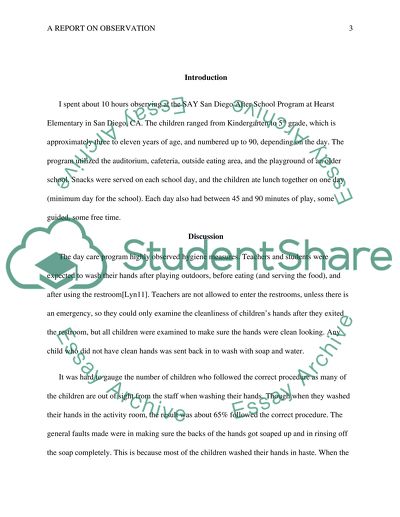Cite this document
(“A Report On Observation Assignment Example | Topics and Well Written Essays - 750 words”, n.d.)
Retrieved from https://studentshare.org/education/1444209-observation
Retrieved from https://studentshare.org/education/1444209-observation
(A Report On Observation Assignment Example | Topics and Well Written Essays - 750 Words)
https://studentshare.org/education/1444209-observation.
https://studentshare.org/education/1444209-observation.
“A Report On Observation Assignment Example | Topics and Well Written Essays - 750 Words”, n.d. https://studentshare.org/education/1444209-observation.


